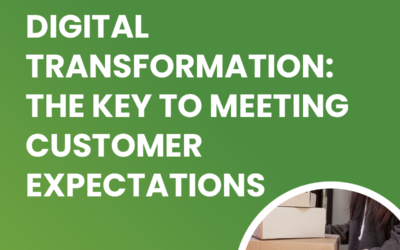TRYON BLOG
The Hesitancy of a WMS Upgrade
Top 5 reasons why supply chain leaders hold back on upgrading their WMS and quick steps to make it easy.

Upgrading a WMS is one of the most impactful decisions supply chain leaders can make. A modern WMS brings greater efficiency, automation and visibility – yet many organizations delay the move, Why? It usually comes down to the challenges within a few critical processes.
Challenge One: The Integration
Warehouses don’t operate in isolation. Every warehouse runs on a web of connected systems – ERP, TMS, OMS, automation, robotics, etc. Leaders hesitate to upgrade because they fear the upgrade wont integrate smoothly, risking order flow, billing and inventory accuracy. Plus, many companies have built custom processes over the years, making integration a complex, time consuming effort. Testing and validation also feel like a massive undertaking.
Challenge Two: Change Management
Updating means you are upgrading how people work. Upgrading is not just about software; it’s about people and processes. Retraining staff, redesigning workflows, and getting buy-in from operators often feels overwhelming, especially when warehouses are already running at capacity. Leaders also fear productivity can drop during the transition – especially during peak seasons. Plus, there is also cultural resistance where warehouse teams are comfortable with the ‘old way’, even if it’s inefficient.
Challenge Three: Data Migration
Bad data in…bad data out. Time can kill data accuracy and a WMS attracts that bad stuff. Moving inventory, SKUs and historical records into a new system is complex. Leaders know that if data isn’t accurate on day one, operations will suffer – which makes data migration one of the biggest stumbling blocks. Most supply chain leaders hesitate because cleaning, validating and mapping data can feel like a massive, risky undertaking.
Challenge Four: Downtime Risk
The WMS is an enterprise system. Products, people, customers, workflows, orders, movements, integrations, etc all rely on this platform. Even short disruptions in fulfillment can impact customer satisfaction and revenue. Many supply chain leaders delay upgrades because they fear downtime during cutover or peak season. Timing is a critical point. Many companies put off the project until there is a ‘perfect window’…which rarely comes.
Challenge Five: Cost and ROI Justification
The business case itself can stall the decision. Leaders need to prove ROI while the upfront costs of implementation, training and process changes is often a tough sell. Plus, ROI is usually not instant. The challenge is quantifying long-term ROI and competing capital investments. Even though a modern WMS can bring measurable results through faster fulfillment, few errors and improved labor efficiency, convincing executives to prioritize a WMS upgrade often requires not just technical justifications, but a clear financial roadmap.
Many company supply chain leaders don’t have to feel stuck. Without a clear plan, systems can fall behind, staff can lose confidence and integrations can break as processes evolve.
The answer, simply, is a continuous improvement plan…its a game changer. By building structured, ongoing support into a WMS lifecycle, companies can reduce risks and move forward with confidence. Here is how:
Automatic upgrades – Less Downtime
Instead of waiting for years between upgrades, keep your system current in smaller, more management increments. This prevents ‘version lag’, reducing downtime and ensuring the WMS is always aligned with modern business needs.
Test Automation – Confidence in Change
Automated testing ensures critical workflows, systems connection and integrations work during and after the update. This eliminates the manual burden of retesting hundreds of processes, speeds up validation and provides leaders with confidence that their systems won’t fail at a critical moment.
Future-Proof Advisory – Clear ROI Roadmap
Having access to someone with operations and technical expertise can help supply chain leaders forecast change. Understanding the connection between a new warehouse layout, adding SKUs and implementing robotics, for example, can give leaders a clear roadmap for ROI, timeframes and unforeseen risks. This is a movement from reactive to proactive.
Staff Augmentation – Flexibility without Overhead
In some cases supply chain and IT teams don’t have the extra bandwidth to manage the upgrade much less its improvements. Staff augmentation gives companies access to skilled experts on demand- without the costs and time of hiring permanent staff – ensuring projects stay on track and are focused.
Help Desk Support- Reduced Change Management Risks
Using a dedicated help desk ensures users are not left struggling when they encounter issues. Quick answers build confidence, minimize frustration and keep productivity up – smoothing the cultural challenges of moving to a new or updated system. Internal IT groups know the systems, but not knowing the idiosyncrasies between the platforms and operations can cause more time wasted getting those answers.
By Weaving continuous improvement into the WMS journey, supply chain leaders shift the conversion from “What if the upgrade fails?” to “How can we continue to get better?” Automatic upgrades, test automation, operational knowledge and staff augmentation create a safety net that makes upgrading not just less risky, but a catalyst for long-term performance. And, Yes, these steps also get products out the door faster and more accurate.
Ready to take the next step? Contact us to explore how we can help optimize your warehouse operations.

Written By Jeff Constable
More From This Category
5 Signs Your Software May Not Be FSMA Rule 204-Compliant
Is your current software keeping up with the new requirements of FSMA Rule 204? If you're not...
Digital Transformation: The Key to Meeting Customer Expectations
In today’s fast-paced retail environment, customers expect seamless experiences whether shopping...
When to Hire a WMS Consultant
Your Warehouse Management System (WMS) is at the core of your supply chain operations. As the...



